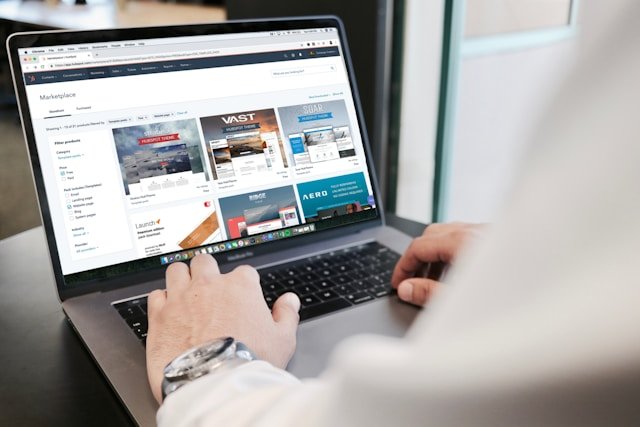Beginner SEO Tips for Small Businesses
In the competitive digital landscape, small businesses need any help they can get to become seen and noticed by customers. One of the most successful ways to increase online visibility, web traffic and potentially boost sales is by making use of Search Engine Optimization (SEO). Check out this in-depth guide full of handy tips on how small businesses can start doing SEO.
Conduct Thorough Keyword Research
Understanding Keywords:
Keywords are the terms and phrases that people type into search engines when they’re looking for something. This could be said as the basic foundation to lay up your SEO strategy. In short, crucial is what keywords do you actually pick up?
How to Research Keywords:
You can simply start by creating a list of terms reflecting your business practice. Write as you were a customer, trying to find a tool Then, you can use keyword research tools such as Google Keyword Planner, Ubersuggest, Ahrefs or SEMrush to bulk out your list and get some data on search volume (how many times a month each keyword is searched), competition and keyword difficulty
Focus on Long-Tail Keywords:
Long-Tail Keywords: longer, more-specific phrases It typically means less search volume, but more conversion since these are capturing more intent. So a long-tail keyword would be something like “women’s running shoes for flat feet” instead of just going after “shoes”.
Optimize Your Website Content
Create High-Quality Content:
Content is king in SEO. In SEO, content is the king! We help ensure your content is both informative and engaging as well that offers value to the visitors. Content for this can vary from blog posts, how-to guides to product descriptions and landing pages.
Keyword Placement:
Use your target keywords naturally Just make sure to NOT use Keyword Stuffing, as search engines can penalize your website for that. Use keywords in: }//Use Keywords in:
- Page titles and headings
- Meta descriptions
- URL slugs
- The first 100 words of your content
- Throughout the body text
Use Multimedia:
Add Images, Videos and Imforgraphics in the content. These can be engaging and shareable pieces that will help you increase times.spent on the site as well increase your organic traffic to bolster SEO efforts
Ensure Your Site is Mobile-Friendly
Responsive Design:
A responsive website does adjust its layout according to the device you are using to view it. This guarantees that your website looks fabulous and works effectively on both desktop devices, tablets, and mobiles. Responsive Design Frameworks (use frameworks like Bootstrap to make life easy.)
Mobile Usability:
Google will predominantly use the mobile version of a site for indexing and ranking. If you’re unsure if your site is mobile-friendly or not, use Google’s Mobile-Friendly Test tool. Make sure the site’s text can be read without zooming, links are far enough apart to be easily clicked and that there is nothing that causes the page to jump around on mobile devices.
Improve Your Page Load Speed
Why Speed Matters:
The speed at which the page loads is one of the ranking factors really relevant for search engines. If your website is slow, this will annoy users and inevitably lead to huge bounce rates here as well affecting SEO in a negative manner.
How to Improve Speed:
Optimise Images: Compress your images such compress it using tools like TinyPNG or Image Optim. Proper image formats (Photos —JPEG, Graphics—PNG)
Enable Browser Caching: This lets your repeat users load pages more quickly by saving some files locally in the user’s browser.
Reduce HTTP Requests: Decrease the number of elements on your page, which includes script files, images, CSS files etc.
Use a Content Delivery Network (CDN): CDNs create caches or copies of your site and store it on servers spread across the world, which helps people loading from different locations see faster load times.
Build High-Quality Backlinks
The Importance of Backlinks:
Backlinks, also known as inbound links, are hyperlinks from another website to your site. They tell search engines that your site is a reputable authority, payment of dividends and thus improve your rankings.
Here are a few strategies that you can use to build backlinks:
- Produce Shareable Content: Make sure you are creating high-quality content that others will want to link out back to. A blog post, research article, informative graphic or video on the topic
- Guest Blogging: Writing articles for industries respectable blogs You should leave a link back to your site in the author bio or linked somewhere within the content.
- Reach Out to Influencers: Identify influencers in your space and reach out to ask if they’d be willing to share the content you’ve created or link back to your website.
- List Your Business: Have your business listed on online directories, local business listings, and industry based directories.
Focus on Local SEO
Optimizing for Local Search:
Local SEO is vital for small businesses who are looking to attract consumers in a restricted area. This will help you rank better in local search results and also on Google Maps.
Claim their Google My Business listing:
GET your Google My Business Listing here “For a better search engine marketing strategy, be sure to completely fill out your profile, including the business name, address and phone number (NAP), website/hours of operation/business description….,” advisesLeah Morris on Marketing Land. Upload photos, post your business address and respond to reviews
NAP Consistency:
Make sure your NAP is consistent throughout all of the online platforms you’re using, including your website, social media pages and local directory listings. Actually misleading information will confuse search engines, and even worse for you – potential customers.
Gather Positive Reviews:
Encourage satified customers to leave reviews on your GMB listing as well as other review sites such as Yelp & TripAdvisor. An increase in positive reviews can help your local search rankings and drive more business.
Optimize On-Page SEO Elements
Title Tags:
This is what appears on SEO results and on the tab of your browser Do you keep in mind encompassing your primary keyword? Make sure to hold it underneath 60 characters with circulate off so it presents up totally in areal output.
Meta Descriptions:
A meta description is a short summary of what information can be found on the web page. Meta description — Belo the title tag you can see meta descriptions in search engines results. Craft vivid meta descriptions (make sure they’re under 160 characters) featuring your top keyword and persuading users to visit.
Header Tags:
Use Header Tags (H1, H2, H3), Hence Structure Your Content. Make sure your H1 tag has the primary keyword and represents exactly what this page is really all about. 4. Use H2 and H3 tags for subheadings to split up your content (Hs refer to headers)
Alt Text for Images:
Alt text describes what is on an image and the content it holds. Search engines like Google use this to know what kind of information is in your pictures. Make sure to add some keywords into your alt text, as this is great for image search rankings and overall SEO.
Regularly Update Your Content
Fresh Content:
Search engines must prefer a website that updates the content on it at various times of interval. I need to keep up the pace with my blog and publish a new article on a regular basis. It’s nice to keep the site fresh and also search engines can take that as a clue your site is still active.
Content Audits:
Regularly do content audits to check existing comments/ranks combined shows. Identifying and fixing outdated, broken or poor performing pages. This is helpful for SEO and your users!
Monitor and Analyze Your SEO Performance
Using Analytics Tools:
Important: for blog traffic statistics, use tools like Google Analytics and Google Search Console. Knowing which key metrics to track, and monitoring them (like organic traffic/visitors, bounce rate/session duration, conversions)*
Keyword Tracking:
Keyword Rankings: Find out how well your site is doing in search engine results. Monitor your keyword rankings as often as you check other reports. Use tools like Ahrefs or SEMrush to track your rankings and see where you can improve.
Adjust Your Strategy:
Leverage the data from your analytics platforms to fine-tune and adjust your SEO efforts around this. “SEE WHAT WORKS AND DO MORE OF THAT…. SEE WHAT DOESN’T WORK, THEN STOP THAT.”
Conclusion
Any small business’s online marketing strategy is incomplete without a hand-in-hand approach with SEO. If you follow these tips for beginners, your website will be more visible and bring more traffic which means a higher opportunity score for the business. As always, bear in mind that SEO is an ever-moving target and something not to be achieved overnight. Sign up to get the latest trends and best practices around SEO, SeaCitation and more!





